#Robert Holmes
Text

Grazing cattle
By: Robert Holmes
From: Natural History Magazine
1985
73 notes
·
View notes
Text

(From left) John Leeson, Patrick Troughton, John Scott Martin, Katy Manning, Jon Pertwee, Robert Holmes, Tom Baker and Douglas Adams at the Doctor Who 15th Anniversary party, BBC Television Centre, London, 1978.
#science fiction#photography#photojournalism#Doctor Who#John Leeson#Patrick Troughton#John Scott Martin#Katy Manning#Jon Pertwee#Robert Holmes#Tom Baker#Douglas Adams#BBC#BBC Television Centre#London#England#UK#1978
84 notes
·
View notes
Note
If we're going on the making affectionate digs at other showrunners do you think that Skaak killing Svild might have been a dig at the overuse (YMMV on this, of course) of comedy Sontarans, which was a sort of comment I saw some fans make? As in, Svild feels very Strax-like but is called a disgrace by the Sontaran Commander. Though I don't think Chibnall opposes playing them for laughs, horse, chocolate, etc. but reminding us how dangerous they can be.
I mean, I think the Sontarans are just an inherently difficult concept to take super-seriously, so much like a lot of things about fandom, I've never understood attempts to seriously argue that they're, like, a set of S-tier uber-competent villains. That isn't to say they can't make for good villains in relatively serious stories; The Time Warrior alone proves that they can.
But it's telling, I think, that even in what is almost inarguably the most successful Sontaran story of the classic era, Robert Holmes still defined Linx as a part of his typical "comedic double act," what with his verbal sparring with Irongron. Subsequent stories want you to invest far more straightforwardly in the Sontarans, and I think that that's... a hard sell, as The Invasion of Time will quite readily attest.
Indeed, I think that "The Sontarans as straightforward villainous warrior race" was always just a rather poor fit for the Moffat Era, which always seemed uncomfortable with the suggestion that "monsters" existed in a hard-and-fast, quantifiable, unambiguous sense.
The Sontarans are pretty much self-consciously designed to not have much in the way of depth to them, to the point of being a clone race who, when properly helmeted, are rendered virtually indistinguishable, and much more forgiving on the BBC's prosthetics budget to boot. They are a poor fit with more distinctly Moffat-esque creations like the Silence or the Weeping Angels, and the only way you could probably fit them in would be... well, to do what he did with Strax, probably.
But I do think it makes more sense for Chibnall to play them straighter, as Chibnall's tenure frequently adopted a more broad, blockbuster sensibility, especially in something like Flux which was very obviously structured as "event television." If it wasn't Doctor Who, maybe you could get Cahiers du Cinéma to consider it a six-hour movie.
So we get Sontarans that feel almost as if they're attempting to split the difference between Strax and The Invasion of Time. In the most charitable reading, it's aiming for the balance of The Time Warrior, and if it doesn't hit the bullseye, well, to give Chibnall his due, Robert Holmes is a very difficult benchmark to hit.
I do think, with the use of titles like War of the Sontarans, the balance is perhaps tipped a little too far into The Invasion of Time territory for my liking, and the cheap shot to make would be that the last time the franchise tried a "War of the [insert iconic Doctor Who monster here]" was... welll...
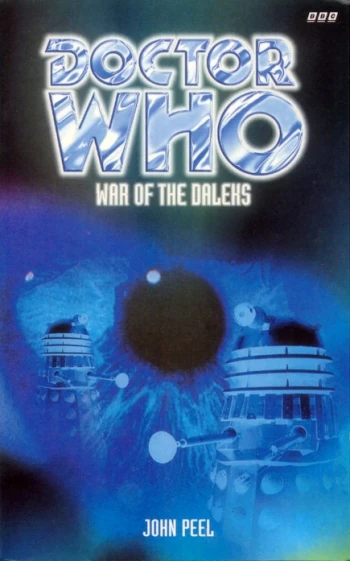
(In aiming to find a balance of my own, I'll note that I'd much rather rewatch even my least favourite Chibnall episodes than re-read novels like Genesys or Evolution.)
I don't know if I have much in the way of a cohesive final point, other than that... I dunno, Sontarans are a deeply strange concept. Which makes them a good fit for Doctor Who, really.
9 notes
·
View notes
Text
FORGOTTEN LIVES: Robert Holmes

Before we begin! Remember to get a copy of the Forgotten Lives Omnibus at this link! The 31st is the LAST opportunity to preorder the new book before you lose your chance! We're going to aim for another double-post today, so that you have enough time to pick up the book!
In the Chibnall era of the show, we were introduced to the idea of Division - we've yet to see it fully in expanded media, but it seems a lot like the Celestial Intervention Agency, pulling strings in the background to make things work in favour of the Time Lords. The Fugitive Doctor is working (reluctantly?) for Division, but we have yet to see the Doctor's relationship with these shady organisations in the show. With the Camfield Doctor, we saw how they bend the rules and act outside the Time Lords' interests. But what does it mean when the Doctor loses their freedom?
Robert Holmes (1926-1986) may be most well known for the invention of the Sontarans, however has written many important episodes for the show including Brain of Morbius alongside Terrance Dicks under the name "Robin Bland". Along with having written the debut episodes of the Third Doctor, The Master, Jo Grant and Sarah Jane Smith, he's also written the episodes Spearhead from Space, The Deadly Assassin, The Talons of Weng-Chiang, The Caves of Androzani, The Two Doctors and many more from the 2nd Doctor era all the way to the 6th. He would've written The Ultimate Foe to complete the "Trial of a Time Lord" storyline, but passed away before he could finish a script.
Here we see a lonely Doctor working trapped beneath the heel of the Time Lords. Where he would have a companion, he instead has a small device that keeps him under constant surveillance. He's stuck doing missions that makes him do terrible things, waiting for that day where he can turn the tide and wipe the red from his ledger.
Portions of his era make him standout, as he does things I never expected to see from either book. In the first book, when written solely under Jay Eales, we see a similar set up to Dennison's "Gauntlet of Absolution" handled in a much different way. The Doctor, much like his current situation, is supervised by the alien race over the course of weeks as the Doctor tries his best to find the best outcome. An unexpected appearance at the end happily caught me off guard, something I hope to see in future releases.
When introducing other writers to this Doctor, Ian McIntre penned another multi-part story that took us between the Hinchcliffe and Holmes incarnations. We see this Doctor reunite with a friend made many faces ago, acting similarly to stories like "The Girl in the Fireplace" and it's relationship to "Deep Breath", not being a direct continuation as much as it's building on the pre-established lore around a strong concept. There's a moment that shows the Holmes Doctor almost reminisce on better times, when he had more freedom than this face may have ever known.
They're possibly the Doctor go through the most physical anguish out of the other incarnations. Eales writes a fantastic opening scene in "Borrowed Time" that details the scars and injuries that this Doctor has sustained, some to a point that should lead to regeneration but instead he is forced to continue. The Doctor that we see at the start of these stories is nothing like the broken and defeated Doctor we find in his send-off.
And as much as I shouldn't pick favourites, I have to give incredible amounts of respect for this TARDIS interior. Referred to as the Rococo TARDIS, it is a gorgeous steampunk design that feels like this Doctor letting out the personality he wishes he could properly show without regular interference.

I have little else to comment on - unlike the Harper or the Camfield Doctors, Holmes' background is easy to understand and stories are simply good. That being said, I couldn't help but consider the specific pairing up of Series 6B Troughton, Jo Martin and Holmes' Doctor. Three incarnations that would not know each other dealing with some alien planet while navigating the bureaucracy of multiple different Time Lord branches could make for either a fantastic political drama or a very funny political comedy.
For more insight into the creative process of every author that worked on Forgotten Lives, you can go to @forgottenlivesobverse and find interviews from everyone involved across the books. If you're looking for insight on how the outfits were designed, you can go to Paul Hanley's Patreon and find what went into designing each Doctor.
Here's the stories you can look forward to as this Doctor does his best to balance his ledger and make amends, pushed to his very limits.
THE OTHER SIDE by Jay Eales
THE HIVE MINDERS (Part Two) by Ian McIntire
RETROGENESIS (Part Seven) by Philip Purser-Hallard
BORROWED TIME by Jay Eales

Our final post will be the George Gallaccio Doctor, the final Doctor before we would begin the Hartnell era. You've got very little time to get the book, so don't miss out!
#forgotten lives obverse#forgotten lives#obverse books#doctor who#the brain of morbius#robert holmes
11 notes
·
View notes
Photo


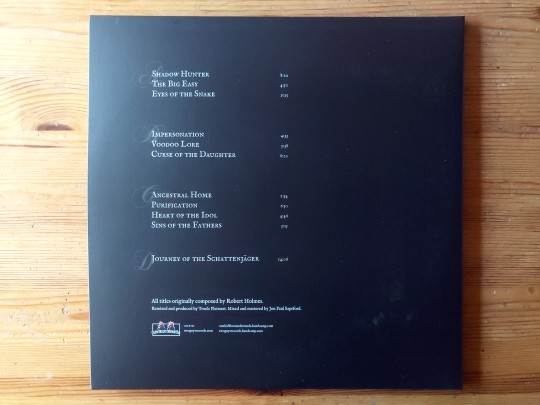

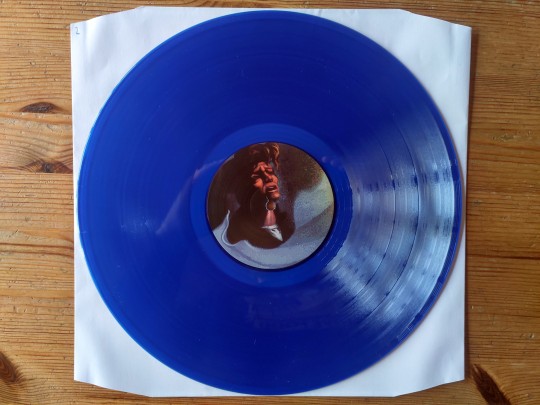

One Kid From Andromeda - Synths Of The Fathers | Two Guys Records | 2023 | Blue Translucent + Red Translucent
Synth arrangements of music from Gabriel Knight: Sins Of The Fathers
#one kid from andromeda#synths of the fathers#two guys records#vinyl#colored vinyl#lp#music#records#record collection#vgm#video game music#electronic#synth music#gabriel knight#robert holmes#sins of the fathers#space quest historian
19 notes
·
View notes
Video
youtube
Check out Aimee Mann’s rat tail.
#til tuesday#voices carry#aimee mann#robert holmes#joey pesce#michael haufman#live music performance#1986
15 notes
·
View notes
Link
I’ve been meaning to post about this, Robert Holmes as a new album kickstarter out that has a little less than a week left. They just need a little more to be fully funded, and they have a bunch of cool rewards, including concept art, design bibles, and A NEW GABRIEL KNIGHT STORY THAT I DESPERATELY NEED!!
10 notes
·
View notes
Text
Reviewed: Big Finish’s Doctor Who Lost Stories – The Ark
Reviewed: @bigfinish’s #DoctorWho Lost Stories – The Ark
Time for tee off!
The Ark, not to be confused with the First Doctor (William Hartnell) serial from 1966 (I’ve yet to watch it!), gives life to the first draft scripts by John Lucarotti — later rewritten from scratch by Robert Holmes as The Ark in Space. Since both versions of the story are vastly different from each other, I will only denote comparisons when necessary.
Adapted for Big Finish’s…
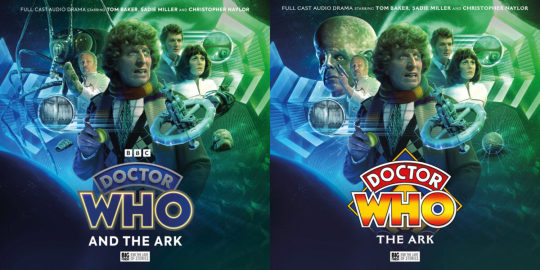
View On WordPress
#Big Finish#Christopher Naylor#Doctor Who and the Ark#Doctor Who Season 12#Elisabeth Sladen#Fourth Doctor#Harry Sullivan#Ian Marter#John Lucarotti#Philip Hinchcliffe#Robert Holmes#Sadie Miller#Sarah Jane Smith#Terry Molloy#The Ark#Tom Baker
2 notes
·
View notes
Text
Rewatching the Talons of Weng-Chiang
Oh boy. This turned out long.
Very hard to write about this one. On the one hand, it’s among the best of the Hinchcliffe-Holmes era in so many ways. The plot zips along, the dialogue is witty and quotable (“sleep is for tortoises”; “Eureka is Greek for ‘this bath is too hot’”) and it brings Victorian London to life even on a shoestring budget.
On the other hand, it is so, so racist. Even at the time – or near enough – it was being criticised for racism, with TV Ontario declining to broadcast the story in 1980 following complaints. This was the era when the BBC was still producing The Black and White Minstrel Show, which was exactly what it sounds like, and Talons was racist enough to raise criticism even in that context.

A thankfully dwindling number of Doctor Who fans make the argument that it was of its time (it wasn’t), that yellowface was necessary given the lack of Chinese actors (there are Chinese actors in this story), or that the story merely shows Victorian racial attitudes as they were (it does, but the Doctor goes along with those attitudes).
Given the egregiousness of the anti-Chinese racism, it feels churlish to reference the writing of Casey-the-Irish-stereotype, the ‘pixelated leprechaun’ (he is pixie-elated, or bewildered, not low-resolution) – but that’s not great either.
It’s almost worse that there are some glimmers of light: Li H’Sen Cheng is a brilliant, compelling character; the racism of the Victorian police is highlighted (although again, the Doctor seems to agree with it); and Cheng’s line that “I understand we all look the same to you” is bitterly comedic in the light of being delivered by a white man in yellowface. Why couldn’t Robert Holmes, writing all of that, see the problem with the rest of it?
(Then again, the BBC didn’t see the problem with Sherlock’s The Blind Banker in two-thousand-and-fucking-ten).
OK. More on the racism in a moment. For now, a few other thoughts:
This is delightfully dense with ideas that are, at best, adjacent to the main plot. The source of the Peking homunculus. Time Agents. The genetic disruption that makes the rats gigantic. It makes the story feel rich and vivid even as most of these threads go nowhere.
Does Victorian London look particularly convincing because a lot of 70s London looks grim and grubby to modern eyes?
The Rodents Of Unusual Size are extremely cute. This story was widely criticised for crappy special events and I think – as with Invasion of the Dinosaurs – it’s improved with distance because basically all the special effects of 70s Doctor Who look crap now, so it doesn’t stand out so much.
As an advert for Robert Holmes’ scriptwriting, this wasn’t improved for watching it immediately after Caves of Androzani. Oh, a villain with facial deformity who hides behind a mask and preys on young women, is it, Robert? How original. (OK, the script is overall a work of genius).
Litefoot and Jago are fabulous from beginning to end. Full marks to Litefoot, being a gentleman and eating with his hands so Leela won’t feel uncomfortable.
Leela is wonderful in this. It’s noticeable, for all its misogyny (“where’s that girl Leela got to?”) 1970s Doctor Who often gives companions a lot more to do than its modern equivalent. Sure, Martha goes off and saves the world when the Doctor is out of action, but when he’s around, she mostly stands there and asks audience stand-in questions. Meanwhile, Sarah Jane goes off and interrogates politicians and Leela stabs people with Janus thorns.
Tom Baker is so good that it feels almost weird to observe it. He’s not good at being the Doctor, he IS the Doctor.
So in trying to square this being both one of the best Doctor Who stories and one of the most racist Doctor Who stories, I find myself wondering: how would I fix it?
It’s arguable that it’s not fixable. Its core idea, that a foreign menace has come to Britain’s shores and murdered innocent young women for its own evil ends, is inherently racist, after all. (On the other hand, the idea that a British menace has come to foreign shores and murdered innocents for its own evil ends is most of the history of the 19th century). But here’s my best attempt.
Add more Chinese characters. Specifically, replace Jago. Our brash theatre owner could now be a brash Chinese immigrant theatre owner, happy to exploit the Orientalist thrills of Li H’Sen Cheng’s performance, worried about the spate of missing women near the theatre, knowing he can’t possibly go to the police himself.
Give us a bit more historical commentary. Maybe Leela can ask why there are so many Chinese people in London addicted to opium. Maybe our new Jago – or the Doctor – can explain. (Is this too much for a kids’ TV show? Not if you already have them going into an opium den, it’s not).
Weave some of that history into the plot. Perhaps Greel was trapped in the Old Summer Palace, and inadvertently released when the British burned it down.
Make Litefoot a Sinophile. As things stand, Litefoot is the personification of the British Empire, a gentleman who, despite being brought up in China, throws out racial slurs left and right and describes the Chinese as “a mysterious lot” and “odd sort of people”. Maybe, instead of feeling himself superior to China and everyone in it, he misses living there. Maybe he bonds with Jago over a shared appreciation of Chinese culture.
Ditch the yellowface. Obviously. For pity’s sake.
I'm not sure whether that would really be enough? But it would help.
#Doctor Who#classic Doctor Who#Robert Holmes#Tom Baker#Talons of Weng-Chiang#fourth doctor#Romana rewatches Doctor Who
15 notes
·
View notes
Text
You know you have something special when the stories and the music that accompany it give you the same feelings
#personal#textpost#the poptart cat speaks#ouat#mark isham#gabriel knight#robert holmes#nitw#alex holowaka#undertale#toby fox#etc
3 notes
·
View notes
Text
‘Borrowed Time’
Jay Eales, who wrote ‘The Other Side’ for the Robert Holmes Doctor in Forgotten Lives, returns to the character in ‘Borrowed Time’ for Forgotten Lives 2. He tells us more…
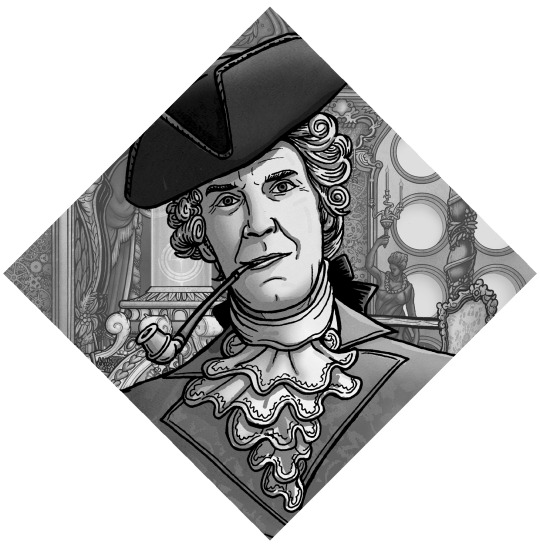
What’s your new story about?
In uncharted space, the Constant are gathering for the Tourney, a brief diversion from their eternal lives. Their champions, plucked from across the reaches of space and time, compete for their sport. But nothing lasts forever. Not even immortality, as the Constant soon discover. It’s the end, but for once, the Doctor is not prepared for it. This is a Doctor who’s seen his future and has singularly failed to escape his past. Can the reluctant spy, haunted by what he’s done for duty, finally escape his shackles or bring his red ledger back into the black before the sands run out? The Doctor is living on ‘Borrowed Time’.
What did you most enjoy about revisiting the Doctor you created for Forgotten Lives?
More than anything, I wanted to redress the modern laziness of the regeneration sequence where something fatal happens to the Doctor, light explodes from their sleeves and shirt collar and the new Doctor stands there with a random line of ker-razy dialogue tripping off their tongue. I got to do something that very few writers for the show have been able to do, creating a character and seeding all sorts of elements to develop further, mysteries to explore, and then seeing them through to fruition. I began writing Doctor Who stories with round robin chapters for things like the Internet Adventures and they were full of highs and lows. No high greater than finding a sympathetic following author who ran with my ideas. And no low deeper than an author who ignored or contradicted everything I’d written, in favour of what, to me, felt like thin gruel. But that’s round robins for you! By committing to write Holmes’ final story, I could ensure the dominoes fell as I’d intended. I was fortunate in being able to read Phil’s and Ian’s stories while I was finishing mine, so I was able to take on board their additions to my version of the Robert Holmes Doctor as he made his curtain call.
What, if anything, did you want to do differently this time?
As a final act, I wanted to go bigger, and more cosmic, stretching the spy story into different territory. It strikes me just now that I’ve borrowed a trope from the Bond movies, where the first entry for a new Bond is generally stripped back and (semi-) realistic, but by the last one, the storylines have become madder and full of invisible cars and characters surviving falls from low Earth orbit. I also wanted to provide some answers to questions posed in my earlier outing for the Holmes Doctor, ‘The Other Side’.
Aside from your own, which of the Forgotten Lives Doctors is your favourite?
They all have elements I liked for different reasons, but as for singling out any one of them, I’m too close to judge. Do any of the Doctors really ‘like’ any of the others? Holmes would either look down on them for their preoccupation with companions and having children, or inability to take things seriously, or he’d be jealous of them for precisely the same reasons. When I pitched for the first Forgotten Lives book, I was hoping to get Hinchcliffe, but it’s as well I didn’t, because he would have been pretty much the same as my Holmes Doctor, and we’d have been deprived of Kara’s Glam swashbuckler.
Can you describe your Doctor in three words?
That all depends on where you’re standing. He’d like to think he’s ‘Six steps ahead’. His handlers call him ‘Useful but untrustworthy’. I think he’s ‘The greater good’.
5 notes
·
View notes
Text
Doctor Who and The Terror of the Autons.
#DW#DoctorWho#Books#TargetBooks#ScienceFiction#Fantasy#BookReview#VintageBooks#Classics#TARDIS#TerroroftheAutons#ThirdDoctor#JonPertwee#UNIT#JoGrant#TheMaster#Robert Holmes#Living Plastic#Nestenes
0 notes
Text


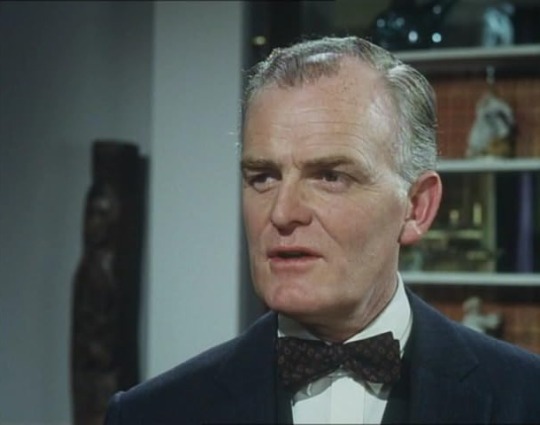
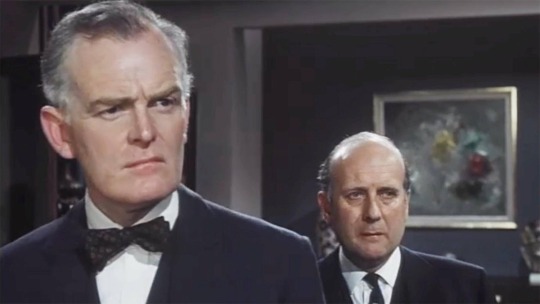


The Saint: The Scales of Justice (6.10, ITC, 1968)
"If an investigation is necessary - which it is not - it will be done by the police."
"That is the last thing we want."
"Why?"
"The publicity. Mr. Templar can work unofficially and discreetly."
"Since when has Mr. Templar been famous for keeping off the front page?"
#the saint#the scales of justice#1968#leslie charteris#robert holmes#robert asher#roger moore#jean marsh#andrew keir#mark burns#john barron#gillian lind#geoffrey chater#ronald leigh hunt#victor maddern#john boxer#brian badcoe#leon cortez#john crocker#edward harvey#clifford parrish#yes yes i know‚ i got distracted again. im so near the end but my attention keeps wandering to other things.. i mean 108 episodes in‚ can#you really blame me? per the Saint Steps In... documentary (which i haven't watched in full but what little I've seen of it is very very#interesting indeed) this episode was particularly singled out by Charteris in correspondence with the production team as evidence that the#series was losing its way and that the quality was dropping (one wonders if he'd seen The Ant One and what on earth he could have thought#of that...). actually im a little puzzled as to why this one offended him so much; it's a perfectly fine Saint ep‚ nothing special by any#means but completely inoffensive in terms of production‚ plotting‚ casting‚ writing etc etc etc. true the plot‚ in which the various#directors of some vague financial company get bumped off at regular intervals‚ feels closer to The Avengers than it does classic Saint#style‚ but it's nothing outrageously different (see Ant ep). and the cast is excellent‚ with Barron getting to play his usual unbearable#tycoon type and Jean Marsh actually getting to do some good fighting back as the damsel of the week. it's all pretty ok!
1 note
·
View note
Text
Doctor Who: The Caves of Androzani
I rewatched this serial on 1 May 2023.
We begin with the TARDIS arriving on Androzani Minor. Peri’s excited to be there. The Doctor teaches Peri (and the audience) about fused silica. Peri is much less obnoxious now with the Doctor; the Doctor’s keen to explore and explain geological features to her. But, quickly they become embroiled in an altercation between gun-runners and miners from Androzani Major. There’s also nasty creatures that infect the Doctor and Peri with a poison, as well as androids.
Like a fair few Dr Who stories, this serial is highly critical of the capitalism of the type that was becoming entrenched in Pinochet’s Chile, Reagan’s USA and Thatcher’s Britain. Trau Morgus is truly the villain of the piece with his dreadful plan to close factories in one area and force unemployed people to another area to work as free labour, as well as what he did to Sharaz Jek. There’s a moment where Morgus sounds identical to the capitalist rulers in the Sun Makers, another Dr Who story by Robert Holmes.
Part of the story is riffed off Gaston Leroux’s tale that became the big musical of the 1980s, the Phantom of the Opera, with Sharaz Jek and Peri in the main roles.
And, in the end, we farewell Peter Davison as the Doctor, and welcome Colin Baker to the role. Of course, Davison has an enduring connection to the series through his own appearances and that of his daughter and son-in-law.
#doctor who#the caves of androzani#talk about an anti-capitalist tale... which I am here for!#au revoir peter davison#welcome colin baker#robert holmes
1 note
·
View note
Text



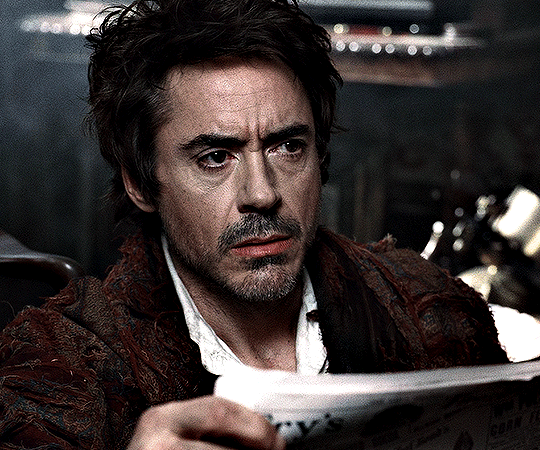
Sherlock Holmes (2009) dir. Guy Ritchie
#sherlock holmes#byaurore#userbbelcher#tuserrachel#userallisyn#noalook#nessa007#usersugar#november#userelio#usereena#tuserpris#tuserhan#robert downey jr#arthurpendragonns#userveronika#filmedit#usermandie#usermelanie#usermorgan#nobody giffed it this year....
3K notes
·
View notes
Text
Don't be afraid, for in a thousand years,
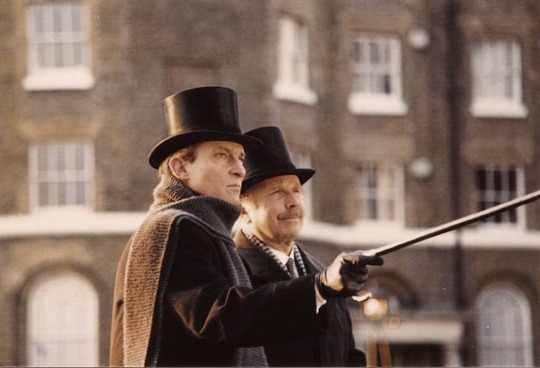
in any version of reality,
I'll find you,

And I'll always be there

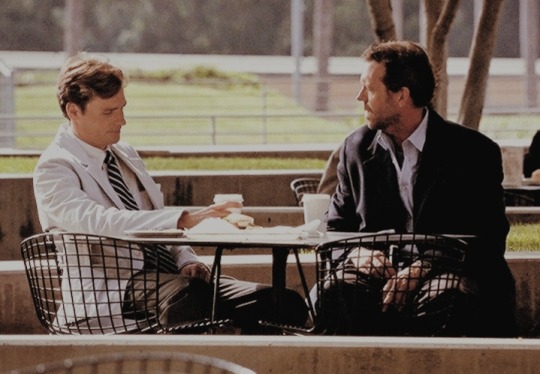
#our baker street boys#have found their way to each other over and over#theirs is an eternal love story for so long as one lives on the other will be there#holmes#watson#johnlock#arthur conan doyle#sherlock holms#john watson#sherlock bbc#hilson#house md#granada holmes#sherlock holmes 2009#robert downey jr#jude law#hugh laurie#benedict cumberbatch#jeremy brett
5K notes
·
View notes